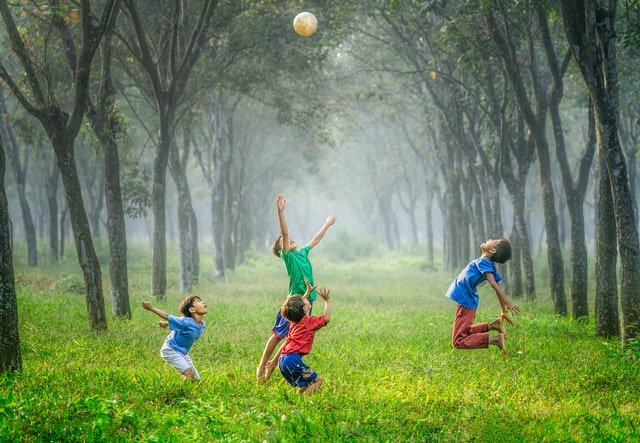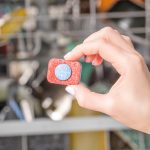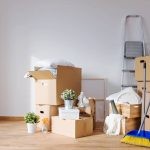
Becoming a parent is a major change in terms of lifestyle, habits, and daily routines, but they are not the only things that will completely change once your bundle of joy finally arrives.
In fact, your home is probably the one that will undergo the most significant changes, mostly because you must adapt your living environment so it fits your little one’s needs while also being clean, safe, and secure.
If you are looking for some inspiration, these couple of ideas from Paul’s Cleaning Melbourne listed below will be helpful in your journey of creating a non-toxic, healthy environment where your child can play, learn, grow, and thrive.

Pay Attention to Lighting & Air Quality
The playroom will be the one place in your home where your child will spend most of his or her time, which is why you want to ensure that the room has the right illumination. Equip their room with layers of lighting such as lamps and overhead lighting fixtures, opting for eco-friendly options such as LEDs and CFLs whenever possible.
Make sure there is enough natural light coming in, and open the windows regularly to let the sunlight and fresh air in. Doing so will ensure a higher quality of indoor air – just make sure to child-lock the windows after you are done ventilating the room.
To improve indoor air quality, also use air purifiers and introduce a couple of air-purifying houseplants – provided that they’re safe for children.
Pick Non-toxic Paint and Flooring Options
When decorating a child’s play area, the main concern parents have is which paint colour to use for the walls and whether it will match the flooring. While the design of your child’s playroom matters, safety should come first. Your child will spend a lot of time playing there, so make sure that everything from wall paint to flooring is free of toxic chemicals and materials.
Sticking with low VOC/no VOC paint is your safest bet, but take special care in case there is lead-based paint present in your home. As for the flooring, go for easy-to-clean, healthy materials such as linoleum or bamboo.
Not only that you would need to look for non-toxic paint brands, but it would also be a good idea to opt for a good garage door opener repair if you plan to transform your garage into a child’s playroom. This is because kids need fresh air at all times, especially during summer.
Get the Right Rug
It might tempt you to cover your child’s room with a wall-to-wall carpet. While they may be great for noise reduction, carpets may not be the healthiest choice since the bacteria, dust, bugs, and dirt often get caught in their fibres, which can wreak havoc on children and adults dealing with respiratory conditions such as asthma.
Area rugs are easier to clean and maintain. You can also swap them easily, and they come in a wide range of shapes, colours, textures, patterns, and designs. Avoid the low-quality ones, though, and opt for versatile models such as the ones from the Miss Amara selection of kids rugs and ensure a soft and silky underfoot feel. In doing so, you’ll be able to create a stylish, fun, stimulating, and safe play space for your little one.
Choose Low-toxic, Sustainable Furnishings
With furnishing your child’s play area, it’s best to stick with pieces and materials that are low-toxic and sustainable. Steer clear of furniture made using UF (urea-formaldehyde) glues, stain-resistant treatments (Teflon), polyurethane foam, VOC paint, and antimicrobial chemicals (Microban).
Also, avoid inflatable furniture and other items that contain PVC, and instead of furnishings made using adhesives (pressed and laminated wood), opt for items made using sustainable woods and materials.
Clean Regularly
Part of creating a safe haven for your little one to play, learn, thrive, and sustainable living itself has to do with keeping it clean and clear of unnecessary clutter. This will help prevent the spread of bacteria and also remove any toxic pollutants, ensuring proper indoor air quality and a safe environment for playing.
Make it a habit to clean their room regularly using harmless, eco-friendly detergents, but don’t shy away from delegating this task to professional cleaners from time to time. Let them tackle a part of your entire property so you can use your free time for more exciting things, such as spending some quality time with your family members. If you live alone and have special needs, consult your NDIS plan manager to check if cleaning services would be covered by your funds.
Remove Toxic Toys
Most parents don’t consider their kids’ toys toxic – they see them as tools for learning and playing. However, equipping the nursery or playroom with the wrong toys can prove dangerous and toxic, especially when you consider how small children often put their hands and toys in their mouths.
To prevent small children from inhaling or swallowing a toy, remove all the small, plastic pieces from their room, and consider replacing them with healthy and sustainable options such as plush or wooden toys.
Wrapping up
Whether you are working with a small area for play, a special corner of your bedroom or living room, or an entire bedroom complete with a playroom, your little one deserves to have a safe, non-toxic, and clean environment where they can learn, play, be happy and carefree.
With these tips in mind, you will make the right choices right from the start and design a healthy, secure environment that will keep your child protected while also giving you, the parent, the much-needed peace of mind.






